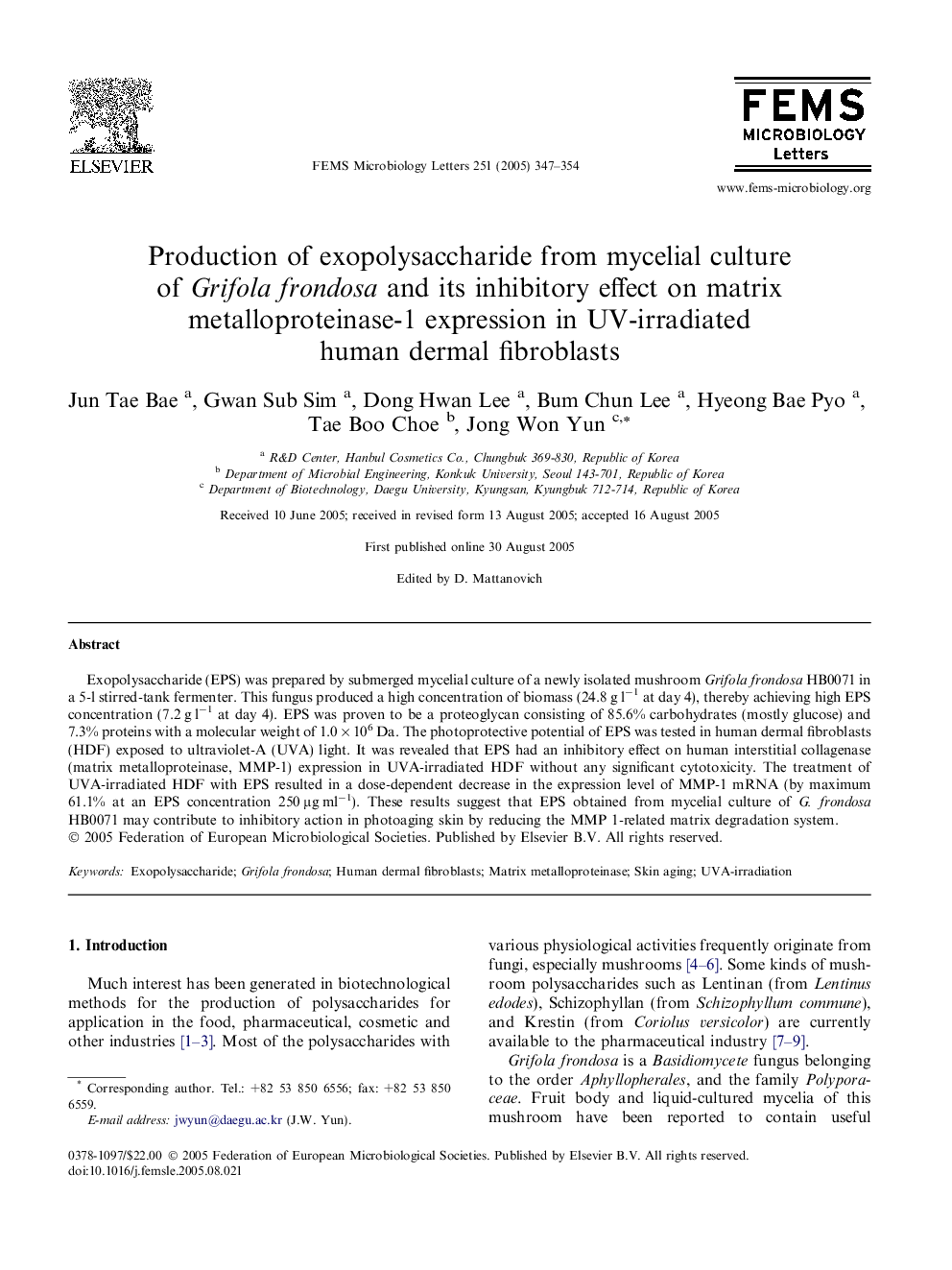| Article ID | Journal | Published Year | Pages | File Type |
|---|---|---|---|---|
| 9121382 | FEMS Microbiology Letters | 2005 | 8 Pages |
Abstract
Exopolysaccharide (EPS) was prepared by submerged mycelial culture of a newly isolated mushroom Grifola frondosa HB0071 in a 5-l stirred-tank fermenter. This fungus produced a high concentration of biomass (24.8 g lâ1 at day 4), thereby achieving high EPS concentration (7.2 g lâ1 at day 4). EPS was proven to be a proteoglycan consisting of 85.6% carbohydrates (mostly glucose) and 7.3% proteins with a molecular weight of 1.0 Ã 106 Da. The photoprotective potential of EPS was tested in human dermal fibroblasts (HDF) exposed to ultraviolet-A (UVA) light. It was revealed that EPS had an inhibitory effect on human interstitial collagenase (matrix metalloproteinase, MMP-1) expression in UVA-irradiated HDF without any significant cytotoxicity. The treatment of UVA-irradiated HDF with EPS resulted in a dose-dependent decrease in the expression level of MMP-1 mRNA (by maximum 61.1% at an EPS concentration 250 μg mlâ1). These results suggest that EPS obtained from mycelial culture of G. frondosa HB0071 may contribute to inhibitory action in photoaging skin by reducing the MMP 1-related matrix degradation system.
Keywords
Related Topics
Life Sciences
Biochemistry, Genetics and Molecular Biology
Genetics
Authors
Jun Tae Bae, Gwan Sub Sim, Dong Hwan Lee, Bum Chun Lee, Hyeong Bae Pyo, Tae Boo Choe, Jong Won Yun,
